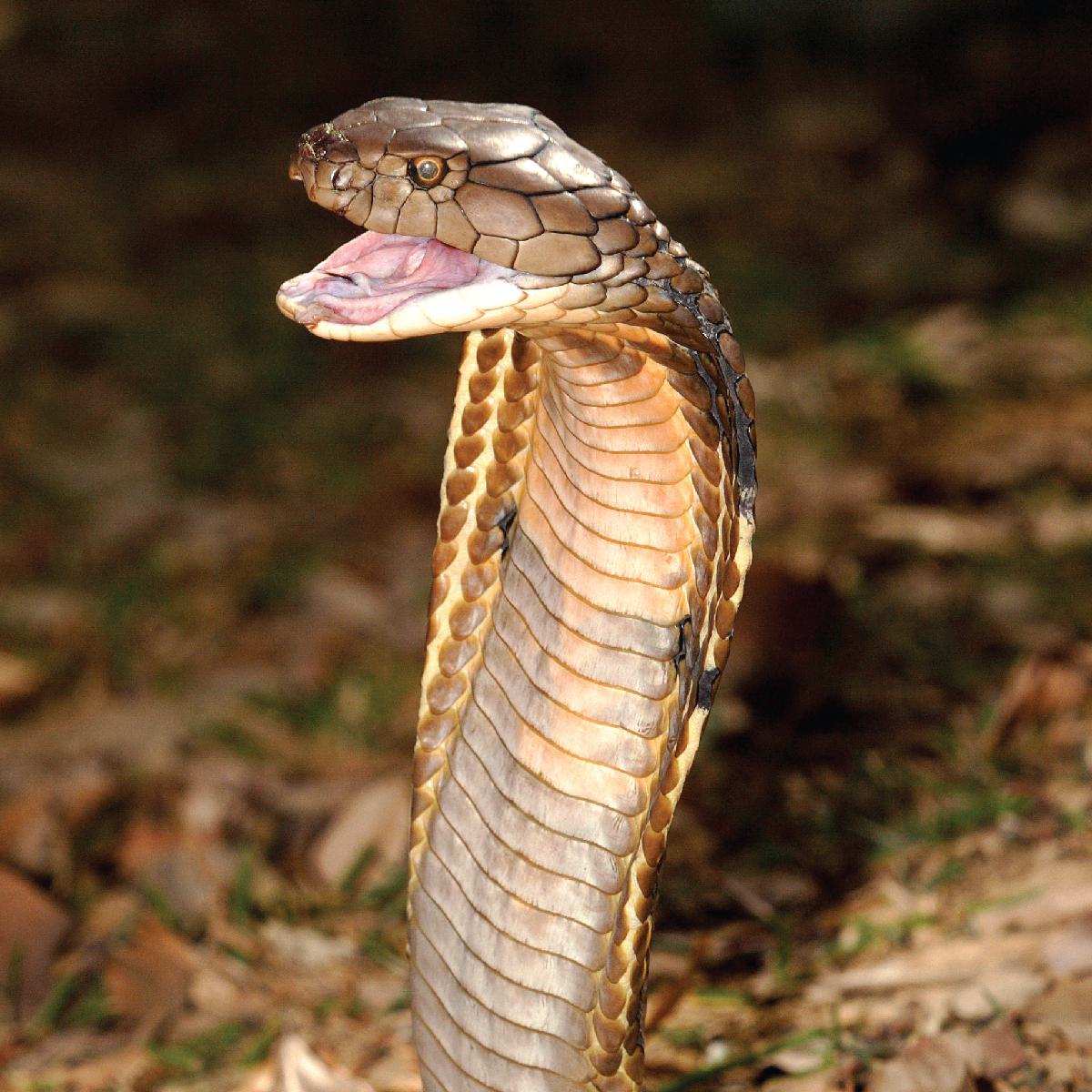
King Cobra
Ophiophagus hannah
Did you know?
- King cobras are part of the Elapidae family, which they share with many other venomous snakes.
- They live in tropical and mountainous forests in Southeast Asia (from India to the Philippines).
- Contrary to popular belief, they are not particularly aggressive.
Adaptations
King cobras can reach lengths of 18 feet, making them the longest venomous snake species in the world. They have muscles and ribs that spread out around their face, which may be used to look larger when facing predators. Their size and venom make them some of the top predators in the ecosystems in which they live. Their diet is fairly specialized and consists mainly of other snakes, including young reticulated pythons.
Young and Family
A female king cobra will use a body loop to pull dead vegetation and soil into a pile, which will serve as a nest. The nesting site is generally located in a bamboo thicket. A single female can lay between 20 and 43 eggs per clutch. The eggs are deposited within the nest. Throughout incubation, the female will remain coiled above or near the nest. The role of this behavior is unknown, but it may serve as protection against nest predators or for purposes of thermoregulation. The mother will stop her "guarding" behavior prior to the eggs hatching.
Threat Level
- Unknown
- Common
- Near Threatened
- Threatened
- Endangered
- Critically Endangered
- Extinct in the Wild
Threatened
The King Cobra faces a high risk of extinction in the wild.
Range
Southeast Asia
Habitat
Tropical forests and mountain rain forests

We care about King Cobras
The Saint Louis Zoo participates in the Association of Zoos and Aquariums' Species Survival Program for king cobras. We support this species in the Charles H. Hoessle Herpetarium at the Zoo. Learn more about how we are helping wildlife around the world.
Find this animal in Historic Hill

SAINT LOUIS ZOO ZONE
Historic Hill
Historic Hill is a lovely stroll through one of the oldest parts of the Saint Louis Zoo. From the 1904 World’s Fair Flight Cage to the Spanish architectural flavor of the 1920s in the Bird House, Primate House and Herpetarium to the finishing touches of our thoroughly modern exhibits, this area of the Zoo has a unique ambiance and a nostalgic history that make it a great destination.

